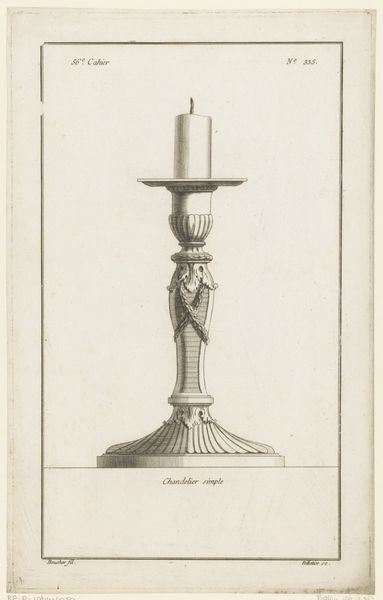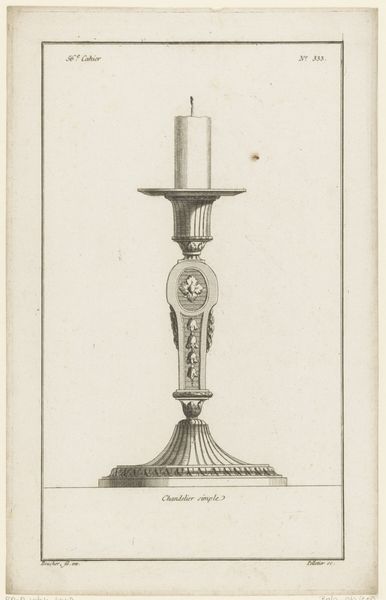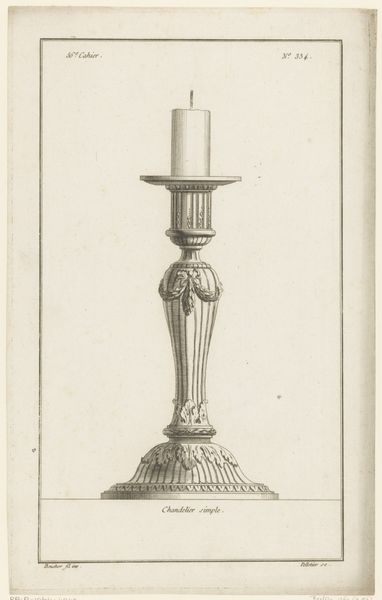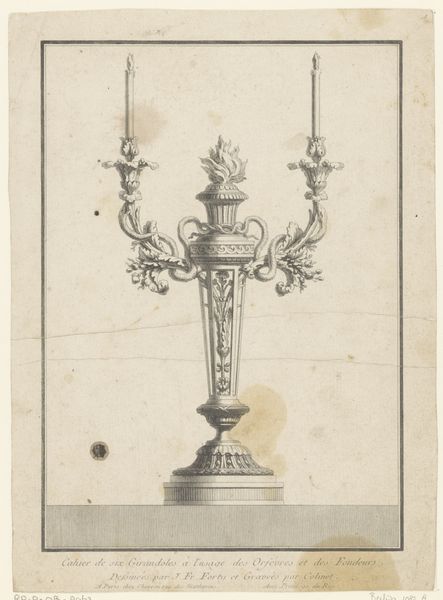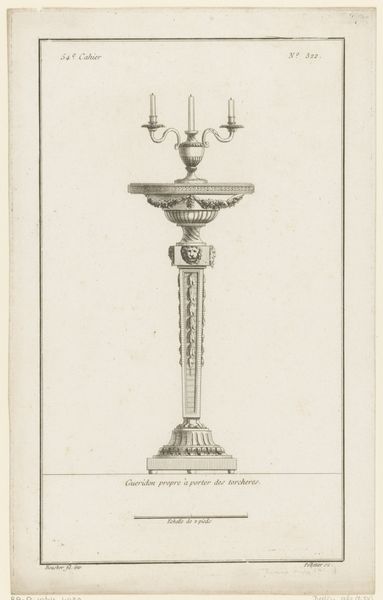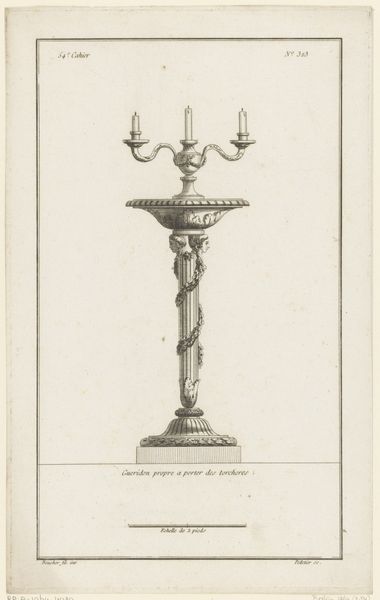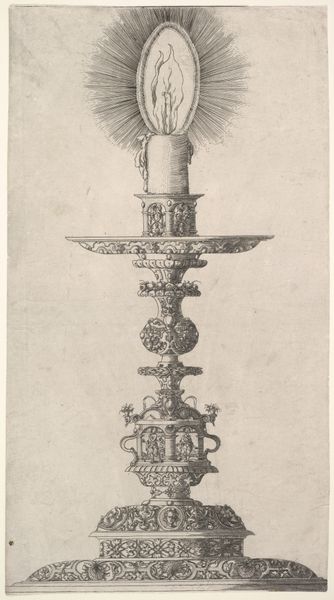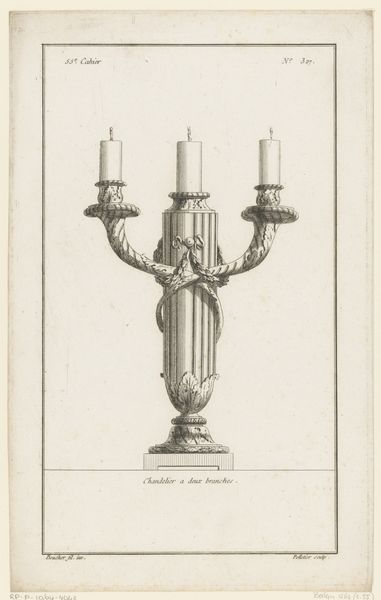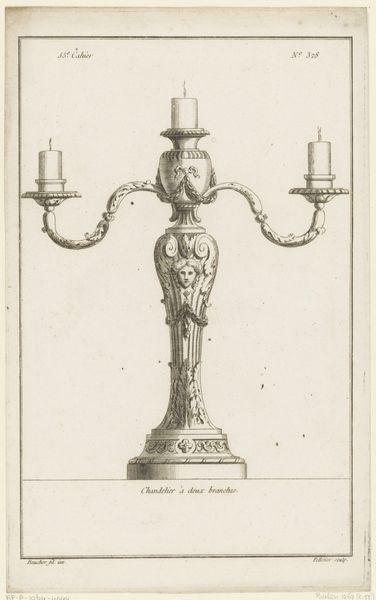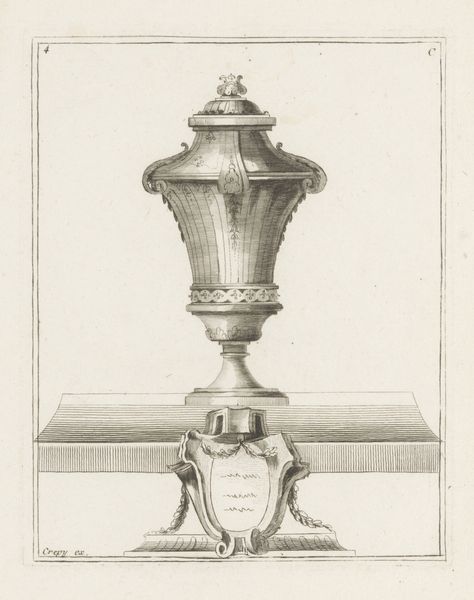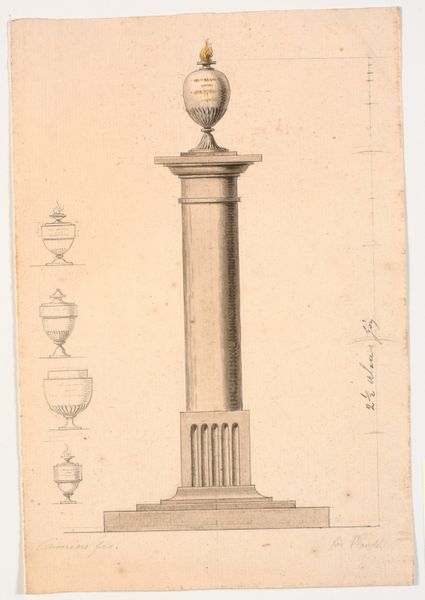
Dimensions: height 329 mm, width 204 mm
Copyright: Rijks Museum: Open Domain
Curator: This engraving from between 1772 and 1779 by Jean Pelletier depicts a candlestick with garlands, titled "Kandelaar met guirlandes." It's currently held here at the Rijksmuseum. What strikes you most upon seeing it? Editor: It has a somber formality. The restrained palette emphasizes the elegant lines, yet there’s a curious stillness, a certain lack of vitality about it. It feels very calculated, but not in a lively way. Curator: Let's consider the materials and the context of production. As an engraving, this image wasn't meant to exist as a unique work, but as a repeatable template for aspiring craftsmen. Pelletier’s labour was geared towards providing accessible design solutions, blurring the lines between high art and practical application in artisan workshops. Editor: That's an interesting counterpoint. I was drawn to the stark simplicity and the precision of the lines—almost neoclassical. The fluted base, the egg-and-dart ornamentation, even the draped garlands, all speak to a desire for order and classical reference points. Semiotically, it functions as an aspiration towards higher aesthetic ideals, a statement of restrained elegance. Curator: But also think about the societal implications. Designs like these were instrumental in disseminating stylistic trends, influencing the tastes of the rising merchant class. The mass production of such designs democratized access to fashionable aesthetics, though only in visual form, creating a hierarchy between the owner and the artisan that can reproduce such designs. Editor: I suppose so. It does also draw my eye towards this contrast in Baroque and Neoclassical forms with such economy of means; line is really the defining aesthetic. Curator: Exactly. It's fascinating how a simple utilitarian object can reveal so much about shifts in both artistic practice and societal values. The engraving acts as a medium to facilitate these shifts and can therefore be examined not only for its artistic choices but also in how labor, style, and even power structures were encoded through visual language at this time. Editor: You’ve broadened my understanding; my initial reading seems overly reductive now! Seeing it as a manufactured artifact allows me a greater sense of it operating in period. Curator: And for me, you shed light on how accessible material changes aesthetics as a method and not just function.
Comments
No comments
Be the first to comment and join the conversation on the ultimate creative platform.
